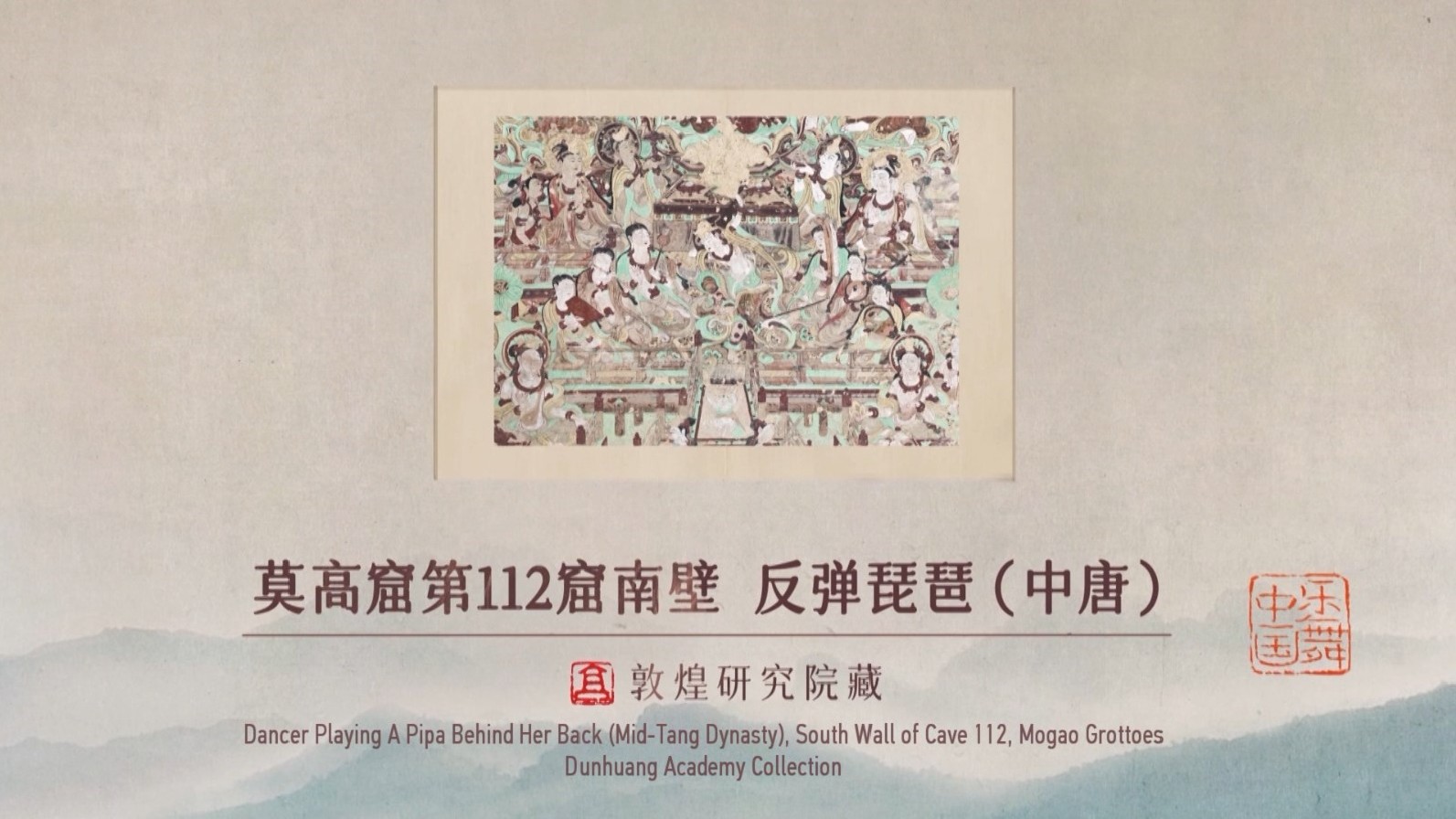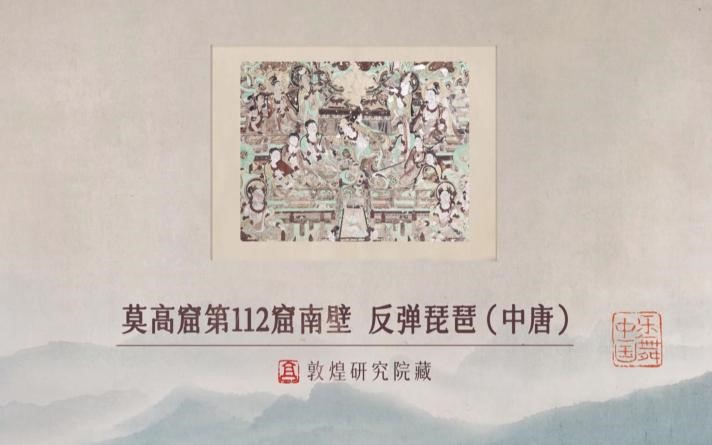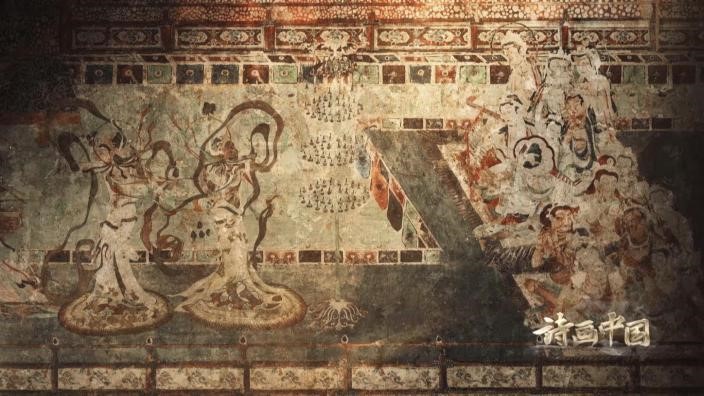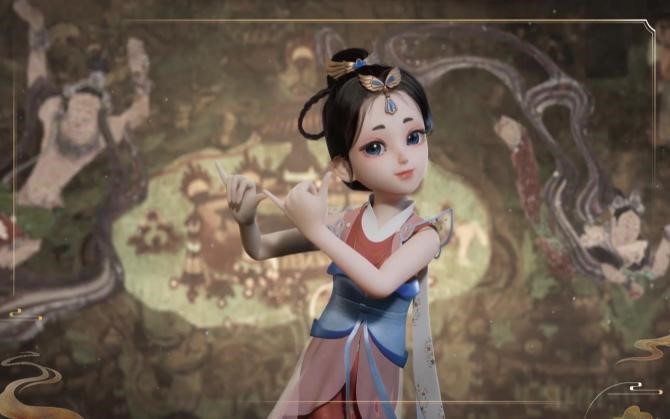Known as a treasure trove of Buddhist art, Dunhuang is a tourist Mecca in northwest China's Gansu Province. Its most representative historical landmark is the Mogao Grottoes, the best known of all China's Buddhist grottoes, and home to a vast collection of exquisite murals and statues. The glory of Dunhuang is believed to date back over 2,000 years. As an important town on the Silk Road, it served as a cultural and religious crossroads, carrying the unique civilization and wisdom of the Chinese. Over all these years, Dunhuang has exhibited its glamour and enchanting artworks of different era. Produced by China Media Group, the cultural program "China in Poetry and Painting" invited famous artist Jin Shangyi to lead audiences into a vivid musical world hidden among the murals of these legendary grottoes. The digital avatar "Jia Yao," the first digital ambassador of Dunhuang culture, performs among these dynamic images, illuminating the ancient charm of the Dunhuang murals.
03:41

In the murals of the Mogao Grottoes, various musical instruments abound, especially the pipa -- a traditional Chinese musical instrument that appears in many music and dancing scenes. In Cave 112, built during the Middle Tang Dynasty over 1,200 years ago, a celestial dancer playing a pipa behind her back is depicted. She appears in the middle of the mural, slightly lifting her right leg while bending rightwards. Her big toes bend a little bit, seemingly dancing to the rhythm. According to Ning Qiang, dean of the Art Research Institute at Beijing Foreign Studies University, "Dancer Holding A Pipa Behind Her Back" not only represents a dancing posture, but also serves as an embodiment of cultural inclusion and vigor in ancient times.

"Dancer Playing A Pipa Behind Her Back" appears in a mural at Mogao Grottoes Cave 112. /CGTN
"Dancer Playing A Pipa Behind Her Back" appears in a mural at Mogao Grottoes Cave 112. /CGTN
According to Fan Di'an, dean of the Central Academy of Fine Arts, since they were first built, the Mogao Grottoes were a center for skilled artisans in various fields such as architecture, sculpture and painting. These people represented the highest level of technology at that time, and created numerous artworks that were regarded as priceless and irreplaceable examples of China's cultural heritage. As a repository of so many gems of ancient Chinese art, Dunhuang reflects the immense creativity of the Chinese people. Cave 220 is a classic example of scenes depicting ancient music and dancing. The two dancers on the right side are seen wearing soft silk robes, appearing to have a gracious and gentle manner, while the two on the left are shown in armor, raising their hands and lifting their legs as they adopt warrior-like poses. It's generally believed the two groups of dancers are performing a whirling dance, which was hugely popular during the Tang Dynasty (618-907).

Details of a mural in the Mogao Grottoes' Cave 220 /CGTN
Details of a mural in the Mogao Grottoes' Cave 220 /CGTN
On the stage of the cultural program "China in Poetry and Painting," the Dunhuang Academy innovatively recreates a music and dancing scene depicted in the murals of the Mogao Grottoes' Cave 112 and Cave 220. The academy also introduces a digital avatar named "Jia Yao" as the first official virtual ambassador of Dunhuang culture. Using advanced digital technology, the figure twirls among the dynamic murals, presenting a lifelike image of a fairy dancing gracefully to the music.
According to Zhang Xiaogang, head of the academy's Institute of Archaeology, the Silk Road was formerly known as the Jade Road. The character "Yao" in Jia Yao's name not only refers to a beautiful piece of jade, but also connotes a sense of cultural exchange. Thanks to the perfect fusion of technology and art, audiences today can appreciate the infinite charm of the Dunhuang murals.

"Jia Yao," the first official virtual ambassador of Dunhuang culture /CGTN
"Jia Yao," the first official virtual ambassador of Dunhuang culture /CGTN
By virtue of its unique location, Dunhuang became a major stop on the ancient Silk Road and embraced different civilizations. Dunhuang contains more than 3,000 colored sculptures and 50,000 square meters of murals. For over 2,000 years, successive generations have reinterpreted Dunhuang culture based on their own ideas and imagination. Now, in the digital era, along the Belt and Road, the murals have experienced a renaissance. As the caves and artworks within are digitized, a new meaning is added to Dunhuang, granting audiences more access to the outstanding achievements of Dunhuang culture while presenting them using different art forms. By embracing modern media and digital technology, the glamour of Dunhuang is brought to global audiences, thus helping to spread China's story far and wide.